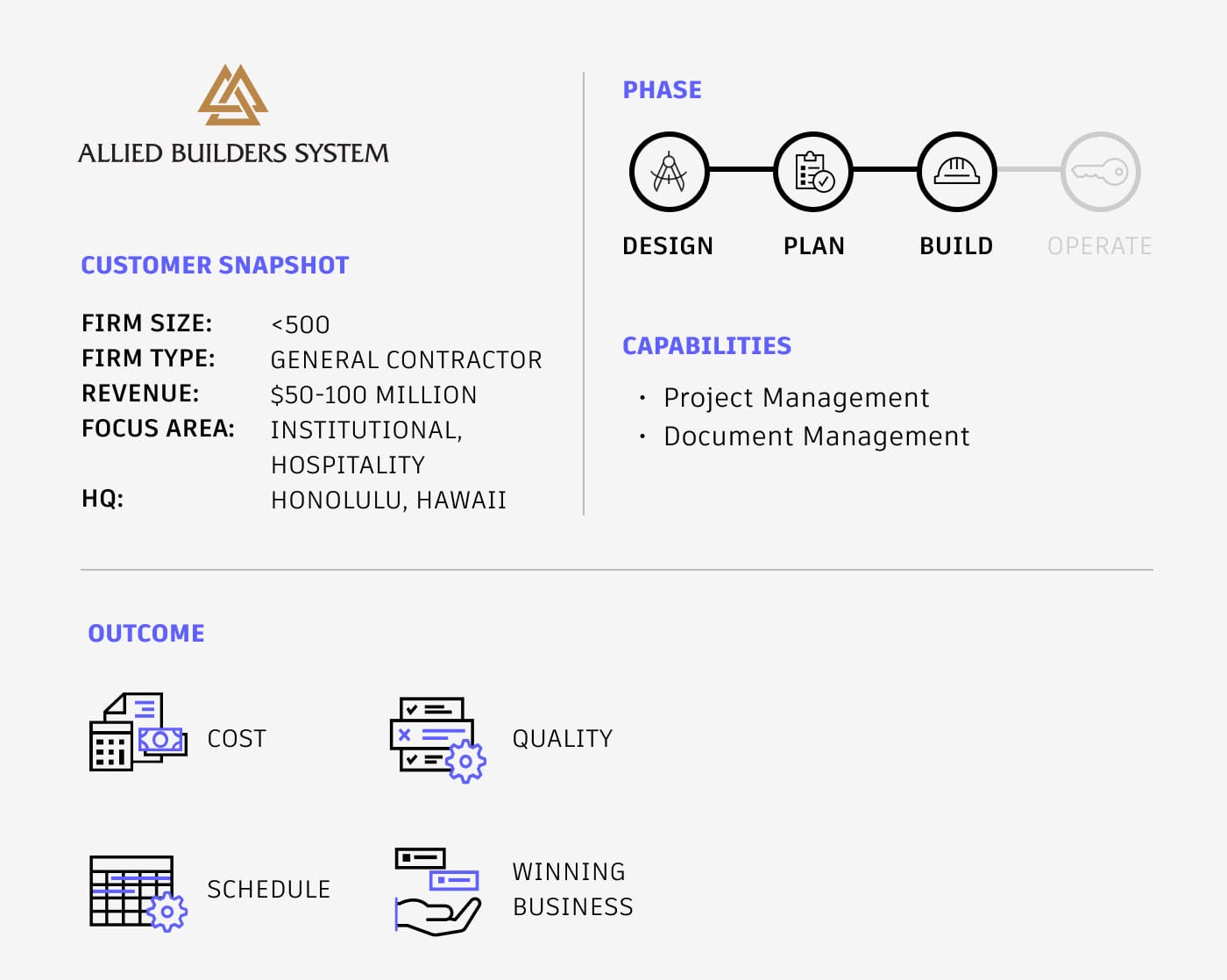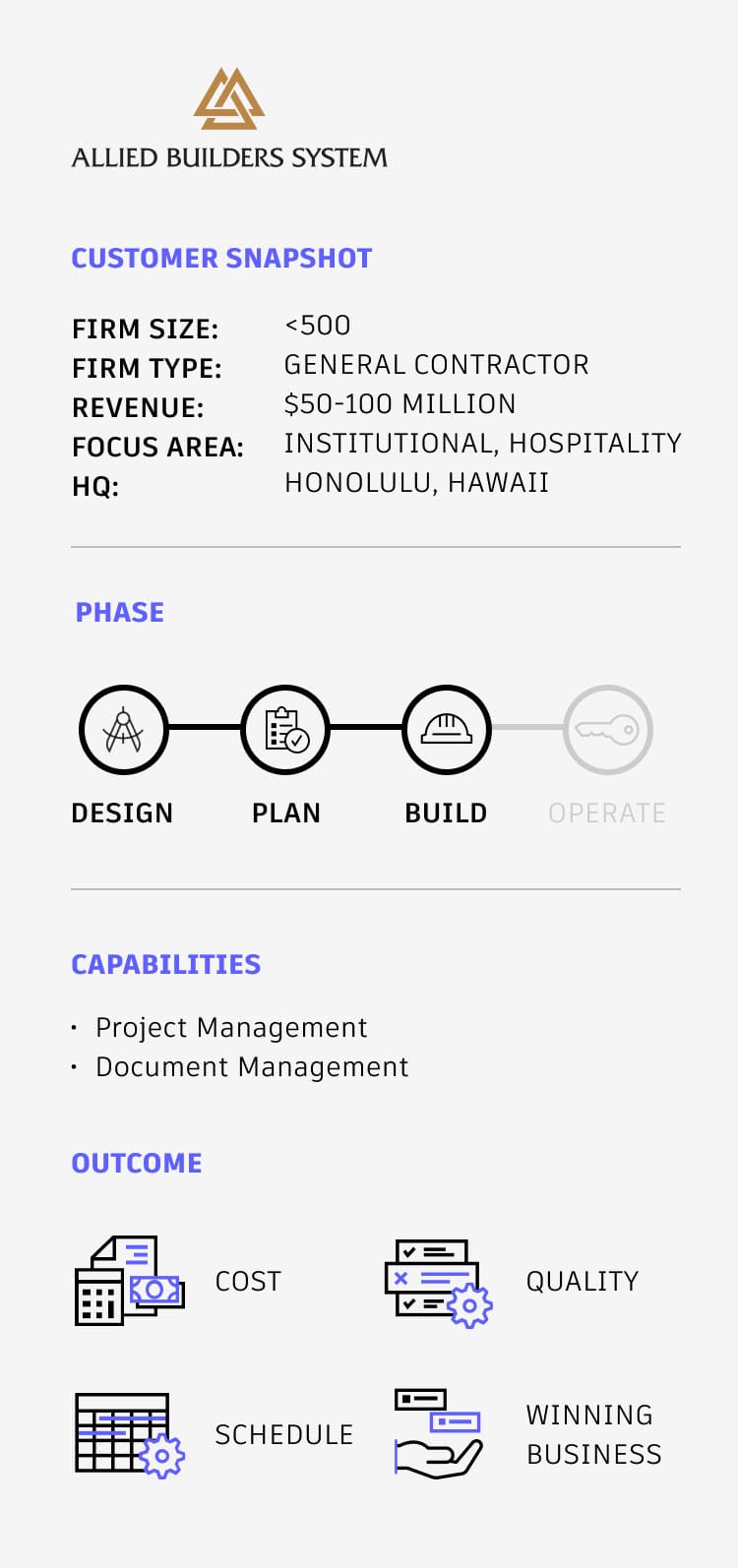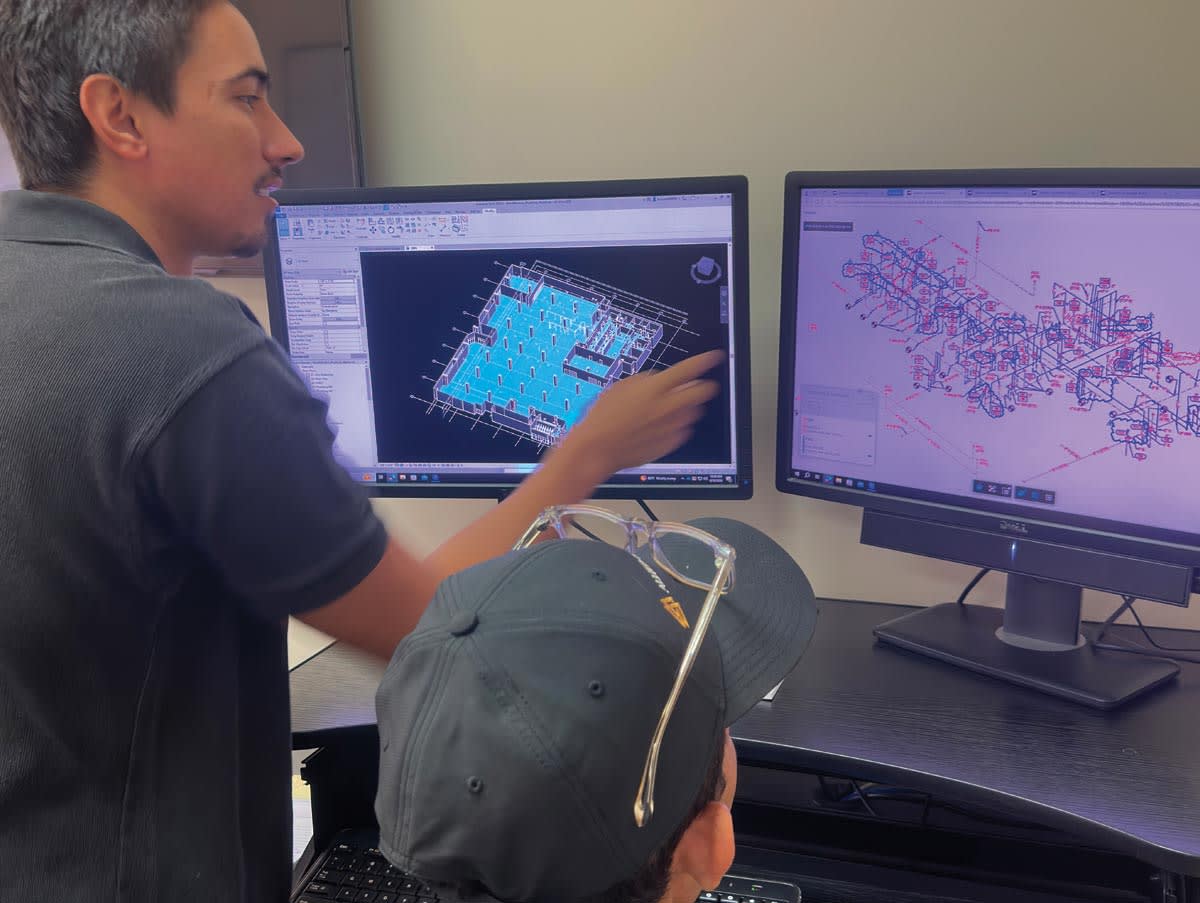Allied Builders Switches to Autodesk for Better Pricing Clarity and Predictability




As construction workflows become increasingly digital, having reliable software that meets your needs and budget is crucial for maintaining a competitive edge.
Allied Builders System, a general contractor in Hawaii, knows the importance of this all too well. The company paid for its construction management software on an annual basis and were overall satisfied with its functionality.
But, when the annual renewal process began, Allied leadership felt frustrated with the unpredictability of cost increases, which made it hard for them to forecast expenses and build trust with the software provider.
Seeking a trusted partner, Allied Builders transitioned to Autodesk Build, which provided flexible annual subscriptions that support unlimited projects and users. Doing so gave the general contractor more confidence in its technology and a more predictable, consistent software investment.
Serving Hawaii since 1970
Allied Builders System is a locally owned general contractor based in Honolulu, Hawaii. Founded in 1970, the company specializes in a range of target markets, including education, hospitality, property development, and more. Allied Builders System works on numerous design-assist projects, with jobs usually in the $10 to 40 million range.
As one of Hawaii’s long-standing construction companies, Allied Builders has made a mark not just in the local community, but in the entire state. The firm is frequently recognized as one of Hawaii’s top 20 construction companies and is regularly acknowledged for its project management expertise and craftsmanship.
Maximizing profit margins with predictable pricing
Every general contractor wants predictability, especially when it comes to their budgeting and financial planning. Unfortunately, Allied Builders wasn’t getting that stability from its previous construction software vendor.
According to Justin Izumi, VP and Chief Estimator at Allied Builders, the unpredictability of costs with the firm’s former software was a constant cause of frustration when it was time to renew the subscription.
"My first reason for wanting to move off our previous platform was the stability of the pricing," says Justin. "It just always felt like such a struggle to renew every year. I couldn't trust that I was going to get a reasonable rate the following year unless I committed to it for multiple years upfront."
In addition, Allied's previous vendor frequently charged additional fees for extra functionality or modules. Justin says he prefers using platforms with more functionality "without being nickel and dimed for every module."
Finding a better solution (and remarkable support) in AutodeskJustin and the team sought a new project management platform with two key priorities in mind. First, they looked for a solution with all the features they needed to execute projects. Secondly (but equally important), they wanted a tech vendor that they could trust.
So, the company set its sights on Autodesk Build and proceeded with initial conversations, discovery sessions, and product demos.
Here, Justin says Autodesk was highly accommodating and was committed to providing personalized service.
"The account team spent a lot of time with us without any hard or high-pressure sales spiels,” says Justin. “It was just, 'Here's where we think we can help, and here's what we can do for you.' Then, when we needed more information or had to see something again, Autodesk was right there."
Regarding platform capabilities, Justin acknowledges that the functionality of Autodesk Build is "pretty equivalent" to their previous platform. Allied wasn't using all of the modules in their previous construction management software, but if they had wanted to, Justin says they would have been charged for those added capabilities.
With Autodesk Build, key project management features like cost management are available out of the box without incurring an additional cost.
"We know if we want to increase our product usage, the modules are already licensed to us," says Justin.
Allied Builders ultimately decided to go with Autodesk, which not only had the required features (and more) included in the subscription, but also offered a favorable pricing structure that gave Allied more predictability in annual software costs.

Transitioning to Autodesk on their terms
Once the decision to switch was made, Allied Builders methodically rolled out Autodesk across the organization. Justin and the team were very intentional about the process and chose to implement Autodesk Build while still using their prior solution. That way, there was a smooth transition between systems.
"Rather than try to make a cut-off date and switch over, we made an investment into overlapping the two so we could just cleanly finish our old projects the other platform and start new projects on Autodesk Build," explains Justin.
The gradual transition and slower period allowed Allied Builders' team to get used to the new software without it being disruptive to their ongoing projects.
Initial impressions and early successes with Autodesk
With the migration complete, Allied is starting to use Autodesk Build to manage sheets, forms, photos, RFIs, meetings, and submittals. Justin says that while it's still in the early days, the team is adjusting quite well to Autodesk.
"There's always a shift when using a new platform because you're adapting your processes to fit the software's framework,” says Justin. "I think we're now at a point where we're comfortable using those same processes in Build.”
Additionally, team members at Allied Builders report better ease of use. Dawn Akamine, Project Administrator at Allied Builders, appreciates how user-friendly Build is and the easy access to robust training resources.
“As I navigate Build, and get a sense of how its features can support me in my daily work, I appreciate what it can do more and more,” says Dawn.
She finds it easier to navigate and execute tasks in than their previous platform, especially the "undo" function and the ability to assign tasks by role.
"I can take a task back to the beginning or redo a certain part without completely starting over," says Dawn. "It's very seamless."
Autodesk is also paving the way for increased collaboration and communication among stakeholders. According to Dawn, she likes how Autodesk enables her to directly assign and forward documents based on roles or company affiliations.
This not only helps ensure the documents reach the right collaborators but also speeds up her workflow.
"When forwarding a document, I could choose a role or a company to send it to," she says. "It just saves so much time."
Beyond that, Autodesk facilitates more collaborations between internal and external partners.
For example, when Allied is drafting within Build, its architect partners can respond to those RFIs within Build or forward them to a consultant as necessary.
"I think we've got the full workflow for RFIs pretty much sorted out," says Justin. "It's useful."
Dawn is also noticing more people asking for access to Autodesk and viewing plans more frequently compared to the software they were using before. This suggests increased engagement and usage among their team and collaborators.
"Build does help us be more transparent, which is what we want," says Dawn. "It's reliable, consistent, and helps keep us accountable to ourselves or any other teams."
Looking ahead: a greater emphasis on connected construction
As Allied gets up to speed on core project management functionality in Autodesk Build, cost management is on their near-term roadmap as well.
"The cost module is something we're going to grow into, and I see the advantage of having more integrated financials,” says Justin. “Currently, we use Build for everything non-financial, but there’s the potential for a larger ecosystem.”
Allied can also view Revit models within Build, and Justin notes that the "BIM model viewer definitely seems better in Autodesk" compared to what they were using before.
Finally, Justin looks forward to using the recently released submittal module and exploring Pype Closeout, which automatically rounds up documents from the project to make it easier and faster to hand over to owners.
All in all, the company aims to optimize its project delivery and overall efficiency.
As Dawn puts it, "We want to become more efficient, more effective, and I think Autodesk Build is going to help us get there. We're going to grow together."
